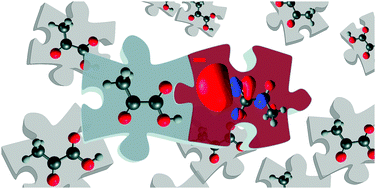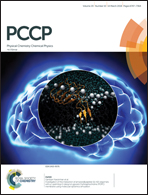Dissociative electron attachment and anion-induced dimerization in pyruvic acid
Abstract
We report partial cross sections for the dissociative electron attachment to pyruvic acid. A rich fragmentation dynamics is observed. Electronic structure calculations facilitate the identification of complex rearrangement reactions that occur during the dissociation. Furthermore, a number of fragment anions produced at electron energies close to 0 eV are observed, that cannot originate from single electron–molecule collisions. We ascribe their production to secondary reactions of the transient anions with neutral molecules. Such reactions turn out to be unusually efficient; the most probable reason for this is that they proceed via the formation of a double-hydrogen-bonded complex followed by an ultrafast proton transfer between the reaction partners.



 Please wait while we load your content...
Please wait while we load your content...